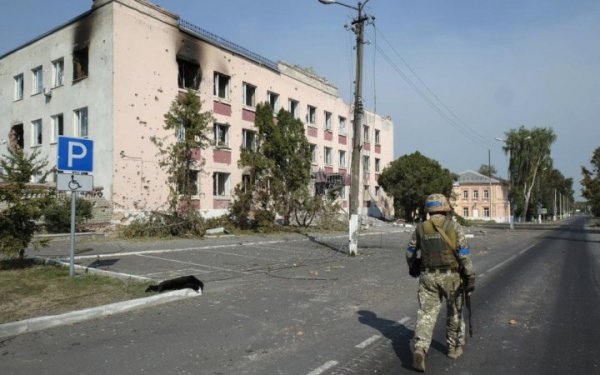The newspaper spoke with Russian civilians and reported on the changes in populated areas that occurred with the arrival of Ukrainian troops.

The British newspaper The Times published a report from the Russian city of Sudzha in the Kursk region, controlled by the Ukrainian Defense Forces, and its environs. Journalists talked to Ukrainian military personnel and Russian civilians, and also described the changes that have taken place in Russian settlements.
Ukrainian soldiers provide civilians with food and hygiene items and show them documentary footage from Ukrainian settlements under occupation. Not a single Russian in a conversation with the newspaper said anything about the military's bad attitude.
On the main and deserted square of Sudzha, the statue of Lenin was smashed into pieces, and the pedestal under it was covered with photographs of Ukrainian cities destroyed by Russian occupiers. On the ground is the Russian tricolor. A shelter for civilians in Sudzha was set up in a school building.
Local resident Elya, who was pushing a stroller with flour and instant noodles with the help of Ukrainian soldiers, told reporters that she “doesn't understand this war.” She repeated the age-old imperial-Soviet narrative about “brotherly” Ukrainians.
“We've never felt hostility and this war is incomprehensible to us. We didn't want this war, we want everything to be like it was before,” the woman said, adding that “like before” meant during the Soviet Union.
Ukrainian soldiers offered to take Elya to Kharkov, where her sister lives, but the woman refused to leave.
In a village near Sud'ya, Ukrainian soldiers showed locals videos from Bucha and Irpen on a laptop, filmed after these cities were recaptured from the Russians. The village head, looking at this documentary footage, said that she “didn't know that Russian soldiers had reached Kyiv.”
“There is something like that in Belgorod too,” she insisted, when they showed footage of destruction from Ukrainian cities.
She pointed to her only broken window: “See? Same.” The screen showed footage of investigators digging up a mass grave in Bucha. She was asked if there were such graves in Belgorod. “Mass graves? No, mass graves, I don't think so. No,” the Russian woman replied.
“Look, they just shot everyone point-blank, in Makarov, and in Irpen, and in Bucha. These are columns of civilians who were trying to leave. They were shot, look how many cars there were, and they all had these signs saying “civilians”. They killed everyone in a row. You see, half of these people speak Russian, and you were told that the Russian-speaking population is being oppressed here.
He explained that the purpose of demonstrating this footage was to explain to the Russians that what the Ukrainians are doing in the Kursk region is not at all what the Russians were doing in Ukrainian settlements.
The Ukrainian team brought water, instant noodles, cookies and diapers for four elderly people with disabilities who were in their home. There was no evacuation of the village – the local authorities simply left. And the Russian soldiers who were near the village begged or stole supplies from civilians in the dark.
Russian Yuliana told journalists that she and her grandmother Galina were stuck in Sudzha “because there is no car and nowhere to go.” While others asked the Ukrainians to find a way to go to Kursk, Yuliana said she wanted to go to Ukraine.
“I think it's safer there. Because the Ukrainians are here and they're going to Kursk, so there will be fighting,” she said.
Andrey, 42, a veterinarian, said he returned home to pick up his clothes when he saw that he had been hit by a missile. “I think it was the Russians because it was from the Kursk side,” he said while waiting to see a Ukrainian military doctor. He claimed he didn't know the Russian occupation had spread beyond the Donetsk region.
Valya, 76, who had previously lived in Donetsk, was also found in Sudzha. The woman, speaking to reporters, voiced one of Russia's favorite disinformation stories about Ukrainian shelling of Donetsk. Now she admits that the Russians are shelling Sudzha.
- The Kursk operation began on August 6 and Ukraine currently controls more than 1,200 square kilometers there. The goal of the deal is not a permanent occupation. The defense forces took control of the territory to protect the population of the Sumy region from constant shelling from Kursk territory. The goal is also to distract the occupiers from other directions.

